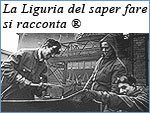 An interview with Tommaso Fanfani Chairman of the Piaggio Foundation An interview with Tommaso Fanfani Chairman of the Piaggio Foundation
by Giuseppe Paletta
|
| Enlarge text |
 |
 |
|
Prosegue, all’interno di questa rubrica l’analisi delle istituzioni e strutture culturali generate dal sistema imprenditoriale. La tappa odierna ci porta presso la Fondazione Piaggio di Pontedera e l’intervista è rilasciata dal suo presidente Tommaso Fanfani.
The Initial Motivations
Between Public and Private
The governance
The Relationship between Foundation and Business
Bibliography
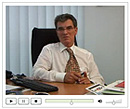 Tommaso Fanfani: Piaggio’s cultural project originated with Giovanni Alberto Agnelli who, in 1992, became the chairman of Piaggio, an engineering industry founded in 1884. At that time, Giovanni –or ‘Giovannino’ as he was known by many—was only 28 and a lover of history and culture in general. He understood the significance of a business’ roots from all points of view, including the commercial. He always told me: “You cannot imagine how much it means to me to go to Japan and be able to say that our company has been established for over a century”. He was not only a business man in the strict sense of the word. He graduated in Social Sciences and then earned an MBA, but his principal studies were grounded in liberal arts. Giovanni’s approach was marked by a strong sense of curiosity. He felt it was important to record the company’s history and so he started– I don’t know if it was his idea or of the staff working with him – by asking me, a professor of Economic History at the University of Pisa, to assign some theses on the history of the Piaggio company. His main motivation was cultural but there was also probably a goal of consolidating the company’s external image. My answer to his request was “Okay, we can do it, but we’ll need an archives. Without that, we can’t really accomplish anything”. To this, Giovanni Alberto Agnelli said in return: “We don’t have a historical archives”.
Tommaso Fanfani: Piaggio’s cultural project originated with Giovanni Alberto Agnelli who, in 1992, became the chairman of Piaggio, an engineering industry founded in 1884. At that time, Giovanni –or ‘Giovannino’ as he was known by many—was only 28 and a lover of history and culture in general. He understood the significance of a business’ roots from all points of view, including the commercial. He always told me: “You cannot imagine how much it means to me to go to Japan and be able to say that our company has been established for over a century”. He was not only a business man in the strict sense of the word. He graduated in Social Sciences and then earned an MBA, but his principal studies were grounded in liberal arts. Giovanni’s approach was marked by a strong sense of curiosity. He felt it was important to record the company’s history and so he started– I don’t know if it was his idea or of the staff working with him – by asking me, a professor of Economic History at the University of Pisa, to assign some theses on the history of the Piaggio company. His main motivation was cultural but there was also probably a goal of consolidating the company’s external image. My answer to his request was “Okay, we can do it, but we’ll need an archives. Without that, we can’t really accomplish anything”. To this, Giovanni Alberto Agnelli said in return: “We don’t have a historical archives”.
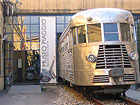 It seemed rather strange that a company established since 1884 did not have an archives. It was equally strange that there was no records repository, at least of what I call the daily proceedings; that is company’s books, the minutes of the Board of Directors, of meetings and so on. So Giovanni gave me the task of seeking out the company’s historical records. I started my investigation especially by questioning the older employees and discovered my first lead. I found out that, up until a few years earlier, there had been a general manager, later appointed CEO, Francesco Lanzara, an extremely methodical man who used to collect and classify those records he believed to be worth holding for longer than the terms required by law. Since Lanzara was the CEO, this meant that his records might contain a large part, if not the entire history of the company. This was a real stroke of luck as it allowed me to make the extraordinary discovery, in a practically abandoned area of the plant, of 42 boxes of well-preserved records which then became the basis of the Piaggio archives. The oldest records dated 1920, whereas the most substantial part covered the period between 1943 and 1970 which corresponded to the years Lanzara spent in the company. Once I had acquired the “Lanzara fond”, I started to look for Piaggio records in other external offices. The first and most obvious place to begin was in Genova – Sestri Ponente, the birthplace of the company and headquarters of Piaggio Aero Industries, a part that seceded from Piaggio & C. in 1964. I also looked for records and documentation in Finale Ligure, another historical productive plant of Piaggio since 1903. I continued my investigation in the communication and commercial agencies that worked with Piaggio over the years. I also carried out research in “Leader” in Florence, in Zancani’s agency in Genoa, in Publifoto in Milan, in the historical notary’s archives in Genoa, in the archives of the Courthouse in Genoa, looking for documentation regarding the evolution of the company, the creation of new branches, what supplies was purchased for the plants, any documentation about advertising campaigns or the normal commercial activities of an engineering company producing motors and means of transport.
It seemed rather strange that a company established since 1884 did not have an archives. It was equally strange that there was no records repository, at least of what I call the daily proceedings; that is company’s books, the minutes of the Board of Directors, of meetings and so on. So Giovanni gave me the task of seeking out the company’s historical records. I started my investigation especially by questioning the older employees and discovered my first lead. I found out that, up until a few years earlier, there had been a general manager, later appointed CEO, Francesco Lanzara, an extremely methodical man who used to collect and classify those records he believed to be worth holding for longer than the terms required by law. Since Lanzara was the CEO, this meant that his records might contain a large part, if not the entire history of the company. This was a real stroke of luck as it allowed me to make the extraordinary discovery, in a practically abandoned area of the plant, of 42 boxes of well-preserved records which then became the basis of the Piaggio archives. The oldest records dated 1920, whereas the most substantial part covered the period between 1943 and 1970 which corresponded to the years Lanzara spent in the company. Once I had acquired the “Lanzara fond”, I started to look for Piaggio records in other external offices. The first and most obvious place to begin was in Genova – Sestri Ponente, the birthplace of the company and headquarters of Piaggio Aero Industries, a part that seceded from Piaggio & C. in 1964. I also looked for records and documentation in Finale Ligure, another historical productive plant of Piaggio since 1903. I continued my investigation in the communication and commercial agencies that worked with Piaggio over the years. I also carried out research in “Leader” in Florence, in Zancani’s agency in Genoa, in Publifoto in Milan, in the historical notary’s archives in Genoa, in the archives of the Courthouse in Genoa, looking for documentation regarding the evolution of the company, the creation of new branches, what supplies was purchased for the plants, any documentation about advertising campaigns or the normal commercial activities of an engineering company producing motors and means of transport.
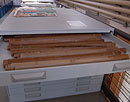 Da queste ricognizioni non emerge granché, soltanto il giacimento straordinariamente importante di Genova Sestri che contiene tutti i faldoni degli aerei costruiti da Piaggio dalle origini del 1900 fino agli anni ’60. Ogni aereo aveva il suo faldone. Nei locali dove veniva conservata la documentazione storica dello stabilimento di Sestri e di Finale ho potuto vedere casse piene di materiale documentale soprattutto lastre fotografiche di treni e aerei. Feci compilare un generico elenco descrittivo del materiale disponibile a Sestri e a Finale. Di fronte a tanta ricchezza documentaria non classificata e non accessibile, poi chiudo la parentesi, con Giovanni Alberto ci eravamo convinti di rendere fruibile l’archivio non solo quello di Pontedera, ma anche la raccolta ligure dell’azienda e avviai una lunga trattativa con Rinaldo Piaggio, presidente di Piaggio Aero Industries, nonché nipote del fondatore, Rinaldo senior. Ci fu molta pressione da parte di Giovanni Alberto Agnelli per unificare i due filoni di carte e documentazione; giungemmo alla firma di un protocollo d’intesa che prevedeva il trasferimento a Pontedera dell’archivio storico di Genova-Sestri, la classificazione e l’ordinamento dell’archivio da parte nostra, con l’impegno sia di renderlo fruibile, sia di ritrasferirlo nel momento in cui anche Sestri avesse realizzato le condizioni di realizzazione dell’archivio storico stesso. Parlai con la Sovrintendenza regionale che in maniera ancora informale non pose ostacolo al trasferimento, dietro l’assicurazione da parte nostra del mantenimento della proprietà all’azienda di Sestri. Si configurava pertanto solo un deposito esterno alla Regione di un patrimonio comunque notificato dalla locale autorità di vigilanza sugli archivi d’impresa. Erano gli anni 1992-1993, e l’azienda di Sestri attraversava una fase produttiva e societaria decisamente complessa: ha avuto vicissitudini finanziarie diverse, passaggi di proprietà e alla fine non sono riuscito a dare seguito alla convenzione firmata e non se ne è fatto più nulla. Da quel momento ci siamo focalizzati sul nostro deposito di Pontedera.
Da queste ricognizioni non emerge granché, soltanto il giacimento straordinariamente importante di Genova Sestri che contiene tutti i faldoni degli aerei costruiti da Piaggio dalle origini del 1900 fino agli anni ’60. Ogni aereo aveva il suo faldone. Nei locali dove veniva conservata la documentazione storica dello stabilimento di Sestri e di Finale ho potuto vedere casse piene di materiale documentale soprattutto lastre fotografiche di treni e aerei. Feci compilare un generico elenco descrittivo del materiale disponibile a Sestri e a Finale. Di fronte a tanta ricchezza documentaria non classificata e non accessibile, poi chiudo la parentesi, con Giovanni Alberto ci eravamo convinti di rendere fruibile l’archivio non solo quello di Pontedera, ma anche la raccolta ligure dell’azienda e avviai una lunga trattativa con Rinaldo Piaggio, presidente di Piaggio Aero Industries, nonché nipote del fondatore, Rinaldo senior. Ci fu molta pressione da parte di Giovanni Alberto Agnelli per unificare i due filoni di carte e documentazione; giungemmo alla firma di un protocollo d’intesa che prevedeva il trasferimento a Pontedera dell’archivio storico di Genova-Sestri, la classificazione e l’ordinamento dell’archivio da parte nostra, con l’impegno sia di renderlo fruibile, sia di ritrasferirlo nel momento in cui anche Sestri avesse realizzato le condizioni di realizzazione dell’archivio storico stesso. Parlai con la Sovrintendenza regionale che in maniera ancora informale non pose ostacolo al trasferimento, dietro l’assicurazione da parte nostra del mantenimento della proprietà all’azienda di Sestri. Si configurava pertanto solo un deposito esterno alla Regione di un patrimonio comunque notificato dalla locale autorità di vigilanza sugli archivi d’impresa. Erano gli anni 1992-1993, e l’azienda di Sestri attraversava una fase produttiva e societaria decisamente complessa: ha avuto vicissitudini finanziarie diverse, passaggi di proprietà e alla fine non sono riuscito a dare seguito alla convenzione firmata e non se ne è fatto più nulla. Da quel momento ci siamo focalizzati sul nostro deposito di Pontedera.
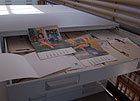 I started the laborious task of filing the material with two young graduates Carlo Corbo and Paolo Pezzini, and in 1992 the company granted each of them a scholarship. One year later, I was able to give the chairman the first results of the classification-inventory of the first nucleus of our historical archives. I remember that first slide presentation to the young chairman and his staff in the conference room of the Piaggio executive management. Agnelli himself was amazed to see that in a short time, an extremely important records repository had taken shape, containing accounts, advertising material, photographs, drawings, sketches, receipts and other items. This was at the end of December 1993, and the satisfaction of seeing the organization and arrangement of the first few hundred files naturally led me to ask the question: “With such a varied and substantial archives, why not create a museum? Why don’t we collect and order the most significant productive testimonies?” At the beginning of 1994, Giovanni Alberto Agnelli first took me to the places that now house the museum, the archives and conference room. At that time, they were only abandoned warehouses full of old hardware, shelves, and boxes of spare parts; there was even the old foundry. Places that had deteriorated for many years, marginal to the productive areas of the plant. Tools and equipment as well as the different productive functions of these places were moved to new structures a few years ago and to plants west of the original location where the archives is now kept. There we stood and Giovanni told me: “It’s around 2.500 square meters: six months from now, this will be the structure for the archives and the museum.” As I said, the area was practically devastated and so instead of six months, six years passed before the museum was ready.
I started the laborious task of filing the material with two young graduates Carlo Corbo and Paolo Pezzini, and in 1992 the company granted each of them a scholarship. One year later, I was able to give the chairman the first results of the classification-inventory of the first nucleus of our historical archives. I remember that first slide presentation to the young chairman and his staff in the conference room of the Piaggio executive management. Agnelli himself was amazed to see that in a short time, an extremely important records repository had taken shape, containing accounts, advertising material, photographs, drawings, sketches, receipts and other items. This was at the end of December 1993, and the satisfaction of seeing the organization and arrangement of the first few hundred files naturally led me to ask the question: “With such a varied and substantial archives, why not create a museum? Why don’t we collect and order the most significant productive testimonies?” At the beginning of 1994, Giovanni Alberto Agnelli first took me to the places that now house the museum, the archives and conference room. At that time, they were only abandoned warehouses full of old hardware, shelves, and boxes of spare parts; there was even the old foundry. Places that had deteriorated for many years, marginal to the productive areas of the plant. Tools and equipment as well as the different productive functions of these places were moved to new structures a few years ago and to plants west of the original location where the archives is now kept. There we stood and Giovanni told me: “It’s around 2.500 square meters: six months from now, this will be the structure for the archives and the museum.” As I said, the area was practically devastated and so instead of six months, six years passed before the museum was ready. 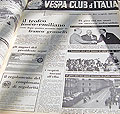 However, we managed it and the museum is now a reality. Sadly, Giovanni Alberto Agnelli died in 1997 at only 32 years old and he never saw the final achievement of something that he strongly believed in and, for this reason, the museum was named in his honor. Together with the museum, the other central element of the Piaggio cultural project was the Piaggio Foundation. Of the three– archives, museum and foundation – this last one I believe was the most strongly desired by Giovanni Alberto Agnelli as a link between the business and its territory. The core of his vision was first, to consider Piaggio as a foundation that makes up this territory; and second, that Pontedera was a company town. In recent years, the local economy has diversified, but, up to a few years ago, this company was the central source of income of the territory. During our long talks, the relationship between us discarded all corporate formality and we became friends, Giovanni Alberto Agnelli synthesized his vision in this way: “the company does not only have a role of producing profit; the company should be a constituent that valorizes the territory and that interacts with it in a more complex way.” In 1993-1994 he spoke about the social function of the business when the studies on this subject were still in their early stages and the relationship between the company and the stakeholders was not an important consideration.
However, we managed it and the museum is now a reality. Sadly, Giovanni Alberto Agnelli died in 1997 at only 32 years old and he never saw the final achievement of something that he strongly believed in and, for this reason, the museum was named in his honor. Together with the museum, the other central element of the Piaggio cultural project was the Piaggio Foundation. Of the three– archives, museum and foundation – this last one I believe was the most strongly desired by Giovanni Alberto Agnelli as a link between the business and its territory. The core of his vision was first, to consider Piaggio as a foundation that makes up this territory; and second, that Pontedera was a company town. In recent years, the local economy has diversified, but, up to a few years ago, this company was the central source of income of the territory. During our long talks, the relationship between us discarded all corporate formality and we became friends, Giovanni Alberto Agnelli synthesized his vision in this way: “the company does not only have a role of producing profit; the company should be a constituent that valorizes the territory and that interacts with it in a more complex way.” In 1993-1994 he spoke about the social function of the business when the studies on this subject were still in their early stages and the relationship between the company and the stakeholders was not an important consideration.
